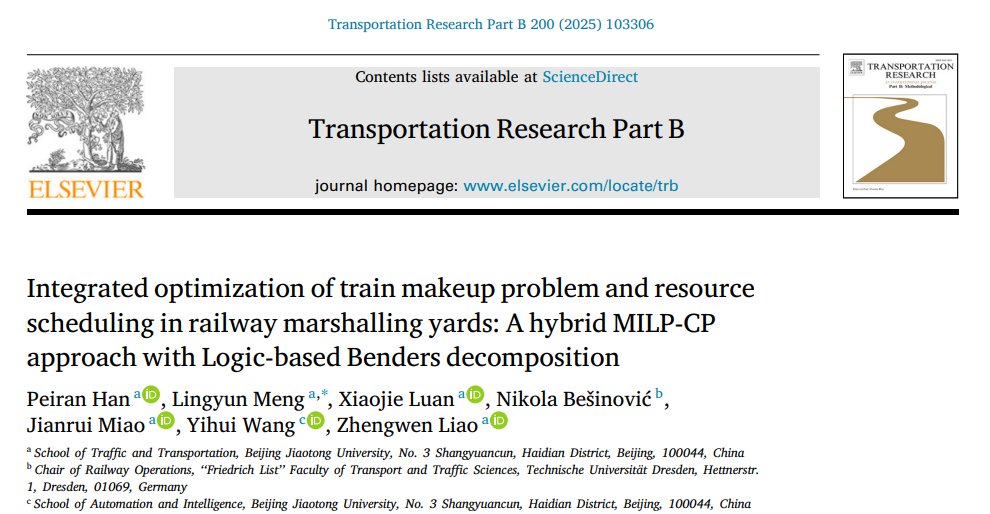
Abstract
In the marshalling yard, various complex operations occur, leading to inefficiencies in railcar
connections. Therefore, designing an effective operational research methodology is essential
for the marshalling yard, and even for the local rail freight network. This paper addresses the
integrated Train Makeup and Resource Scheduling (TMRS) problem. A Mixed-Integer Linear
Programming (MILP) model is developed, where the train makeup problem is formulated as an
assignment problem, guiding the overall operations. Additionally, a series of hybrid flow shop
scheduling tasks are established to coordinate the operations of trains, blocks, and railcars. Due
to the complexity of TMRS, the integrated problem is reformulated as a hybrid mixed-integer
linear programming (MILP) and constraint programming (CP) model. Logic-based benders
decomposition (LBBD) is used to partition the TMRS problem, with lower bounds designed
and integrated into the solving procedure to accelerate the convergence. We propose feasibility
cuts, optimality cuts, and symmetry cuts based on the structure of the subproblem, which are
dynamically added to the master problem. Two numerical examples are designed to demonstrate
the effectiveness of the proposed hybrid modelling approach, lower bounds, and cuts. Finally,
the proposed approach and algorithm are tested on a series of artificial instances and real scale examples, demonstrating their practical effectiveness and ability to achieve high-quality
solutions.
Keywords
Marshalling yard
Hybrid flow shop scheduling
Rail freight
Constraint programming
Logic-based Benders decomposition
Highlights
•Novel approach jointly optimizing train makeup plan and resource schedule.
•Hybrid modeling (MILP -CP) is proposed considering problem characteristics.
•
Logic-based Benders partitions the problem based on practical working logic.
•
Lower bounds, feasibility, optimality, and symmetry cuts are integrated iteratively.
•
The framework outperforms the MIP solver and shows robustness.
原文传递: https://doi.org/10.1016/j.trb.2025.103306



